Expert Advice for Growing Your Own Wedding Flowers
Are you or someone you know getting married sometime soon? Are you considering growing and arranging the flowers? That’s great, because it’s a wonderful opportunity to create a unique and very personal experience -- and save some money along the way. But providing flowers for a wedding is not a project for the fainthearted! Read on to learn about what’s involved, so you can make a good decision about how much you want to take on.
There are two parts to this wedding flowers adventure, and it’s important to consider them separately. There’s providing the flowers (growing them and/or purchasing them in bulk) and arranging the flowers (from bridal bouquet to table arrangements).
Providing the Wedding Flowers - Experience is Essential
As any floral designer will tell you, weddings require a lot of plant material. Picture the number of stems you think you’ll need and double it. The reality is, if you don’t already operate a cut flower farm, you probably won’t be able to produce all the flowers and foliage that are needed.
But that’s not necessary. You can grow some of the flowers and buy the rest from commercial growers. There are probably cut flower farmers at your local farmers market or you can use slowflowers.com to find one nearby. Most of these local growers offer wedding flowers and greens by the bucket. You can also turn to an online resource such as fiftyflowers.com for greens, fillers and specialty blooms such as roses, anemones, gardenias, freesia, ranunculus, gerberas and lisanthus.
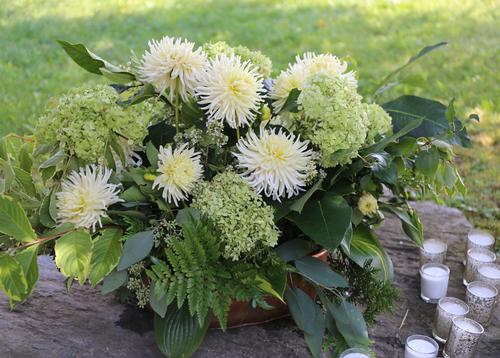
If you’re planning to grow cut flowers for a wedding, you’ll need gardening experience and no small amount of courage. For the gardening part, it's important to know how much space each plant needs and how soon and for how long it will bloom. You need to know which plants should be pinched or staked, watered or fertilized, how to cut and condition the stems, and how long they will last in a vase. Courage is required, because you also need to be prepared to cope with adverse weather events, crop failures, pests and diseases, any of which can dash even the best laid plans.
To help you think about what’s possible, here are some suggestions for DIY wedding flowers. The list includes annuals, perennials, shrubs and vines, and is organized by approximate bloom times -- which will vary depending on your location and weather conditions. And don’t forget about fillers and greens. You’ll need far more than you think!
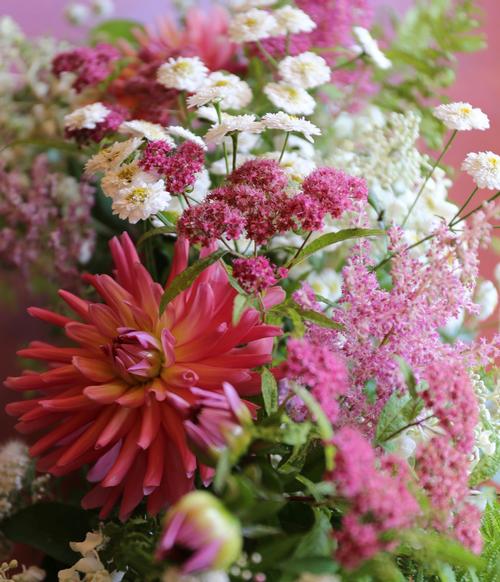
Best Cut Flowers and Greens for DIY Weddings
Flowers for Spring: daffodils, tulips, hyacinths, dicentra, lilac and other flowering shrubs, hellebores, lily of the valley, alliums, primroses
Flowers for Early Summer: peonies, bearded iris, alliums, roses, Asiatic lilies, lupines, foxgloves, spirea and other flowering shrubs
Flowers for Midsummer: sweet peas, astilbe, Queen Anne’s lace, cosmos, clematis, phlox, larkspur, delphinium, daisies, stock, Orienpet lilies, bachelor buttons, zinnias, snapdragons, ageratum, scabiosa, verbena, coreopsis, lavender, oregano and other herbs, statice, yarrow, clary sage, nigella, orlaya
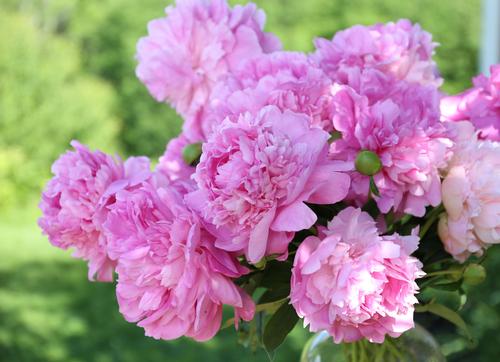
Flowers for Late Summer and Early Fall: dahlias, hydrangeas, calla lily, Oriental lilies, gladiolus, lisianthus, larkspur, scabiosa, zinnias, cosmos, sunflowers, rudbeckia, snapdragons, asters, orlaya, ageratum, gomphrena, nigella, chrysanthemum, verbena, roses, amaranth, statice, celosia, clary sage, ornamental grasses, strawflowers
Greens and Fillers to Grow at Home: matricaria, ammi, bupleurum, bells of Ireland, baby’s breath, euphorbia marginata, mignonette, honeywort, lady’s mantle, hosta, dusty miller, baptisia, mint, sage, rosemary, dill
Greens to Forage: boxwood, holly, ivy, dogwood, juniper, magnolia, hydrangea, cotinus, cedar, physocarpus, pittosporum, daphne, winterberry, olive, willows, fringetree, ferns, astilbe, grasses, herbs
Greens and Fillers to Buy In: salal/lemon leaf, seeded and silver dollar eucalyptus, myrtle, leatherleaf fern, heather, ruscus, ivy, camellia, wax flower, feverfew, baby’s breath, hypericum
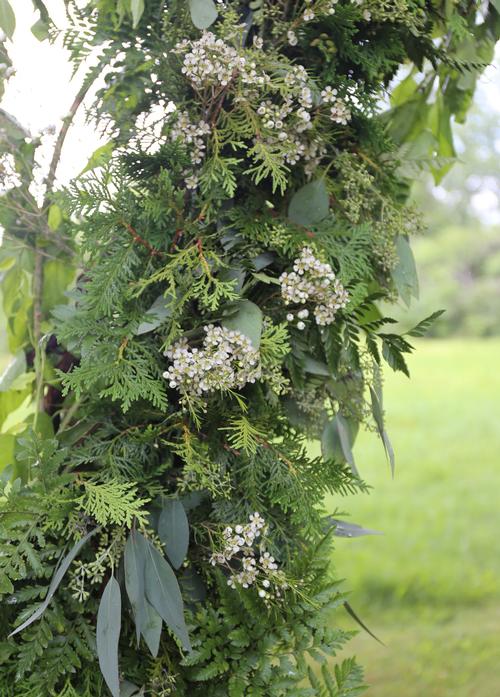
Arranging Wedding Flowers – Timing is Critical
If you are the bride, mother of the bride or have other big wedding day responsibilities, think twice about your desire to arrange the flowers. Wedding flowers must be put together at the last minute and there will be mountains of other things competing for your attention. Here are some of the questions to consider:
What’s the Scope? Even a simple wedding can call for dozens of table arrangements, plus bouquets, corsages and boutonnieres. Will there be an arbor or huppah that needs decorating? How about special arrangements for the entrance, ceremony area, wedding party table, bar and buffet tables? Will the aisle be decorated?
Even for a modest-sized wedding, experienced floral designers usually schedule a couple assistants to help them prep. Much of it can be done the day before, but depending on the site, the weather and the types of flowers being used, there’s usually plenty that needs to happen on the wedding day.
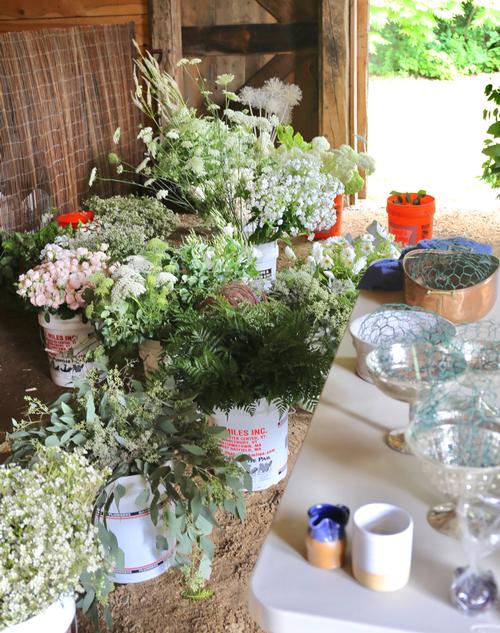
Casual or Formal? If the bride has very specific expectations for the flowers and every detail is critical, it makes sense to call in a professional. You need someone with experience, staff and full access to a wide range of materials. If flowers are not a top concern and the bride will be thrilled with casual bouquets of whatever is in bloom, then you have a good chance for success.
How about Containers? Every wedding has a style of its own, and containers play a big role in expressing that style. Will it be farmhouse rustic with milk cans and sap buckets? Boho-chic with colored glass and beads? Italian Renaissance? Cool and contemporary?
Whatever the style, collecting all the necessary containers and accessories is a project in itself. Most weddings require at least a few large arrangements, and it’s important to find suitable ways to display them. Make sure all containers are water-tight and heavy enough not to topple when someone bumps a table or the wind comes up.
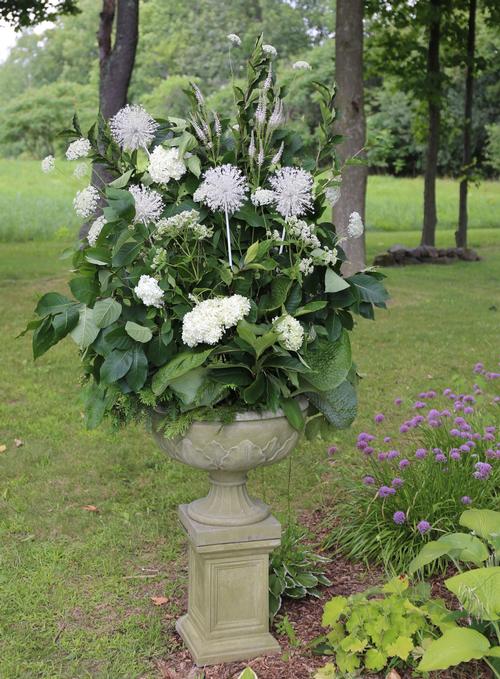
Who Will Be in Charge? With such a big project and such a very important day, one person needs to be responsible for the flowers – and it can’t be the bride. The flower boss needs to understand the bride’s vision and have her complete confidence. They need to know every element that’s required and be able to source, time, order and track all of the materials, from flowers, vases and floral foam to ribbons and boutonniere pins.
The actual production process also needs to be carefully scheduled so everything is ready before the photos begin and the guests arrive. When will the flowers be delivered and where will they be stored? Is there a cool and protected workspace and will there be enough people to help? How long does it take to make a bridal bouquet or cover an arbor with greenery? Once the flowers have been arranged, where will they be stored, and how will they be transported and distributed?
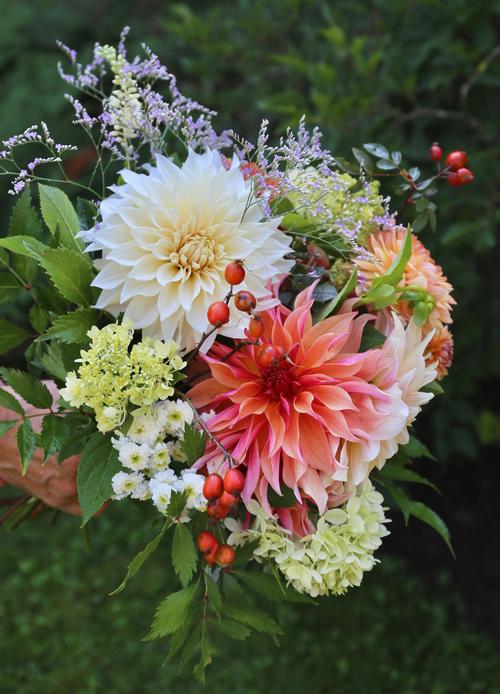
Divide and Conquer
As fun as it sounds to grow and arrange all the flowers for a wedding, it’s a big job. Consider signing up for just a portion of what’s needed. You could grow some of the flowers or arrange some of the bouquets and give a professional floral designer the rest. This will make it a fun rather than terrifying adventure.
Bite size projects could include decorating the tables with Mason jars full of daffodils, zinnias or wildflowers; providing buckets of peonies or sunflowers to line the aisle; making simple, hand tied bouquets with garden roses, baby’s breath and fresh herbs; organizing friends to contribute table arrangements made with flowers from their gardens.
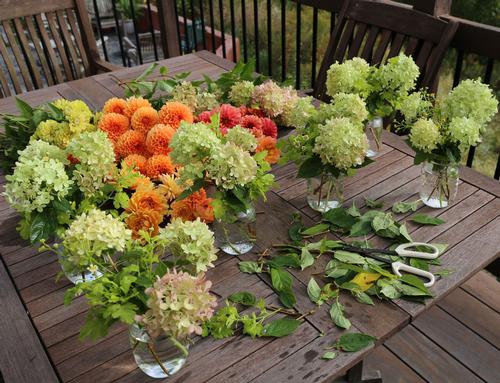
Remember that weddings are about the couple, not about the flowers. Find a way to participate that adds to the joy and not the stress.
To learn more about DIY wedding flowers, read Fresh from the Field Wedding Flowers by flower farmers Lynn Byczinski and Erin Benzakein. Their eBook includes 75 minutes of how-to videos.


